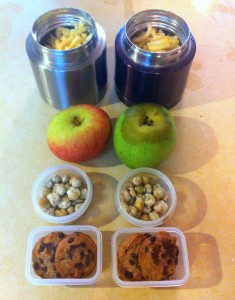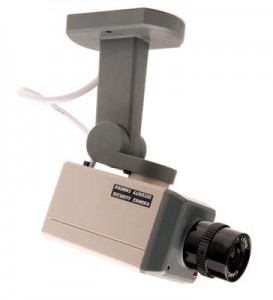I care as much about school lunch as I do about school academics, I volunteer in my kids’ school cafeteria, and my essay for The Cassoulet Saved Our Marriage is about school lunch. In the essay, I describe how my own elementary school cafeteria experience affected how I feel about my sons’ school lunch today, and a lot of my experience (a lot more than I was able to write in the essay) has to do with my mom. She cooked daily and fed our family well — she has always cared about food — but she never stressed food. No one meal was going to make or break our day, our health, our happiness. So when I was in third grade and she went back to work full-time, off I went to the school cafeteria where I felt totally free to choose whatever kind of weird lunch appealed. Most of fifth grade, that meant coconut ice cream and french fries. You can read more about that in the book.More
lunch
That Meal That Shall Not Be Named
with apologies to the non-breeders, and the breeders who’ve already run this particular gauntlet…
Because I know the world doesn’t really need another school lunch post…
But: if we’re going to talk learning to eat, I can’t avoid the fact that I have to re-learn the school lunch thing every. single. year.
Because every single year the situation changes. In the beginning there were bentos, with baby vegetables, and dipping sauces, and Japanese stickers. Then there were bentos with sandwiches in cute shapes, and hard boiled eggs molded like kittens or fish, and rice pressed into hearts and stars. And notes. I kid you not. But back then, in the beginning, there was only one meal to pack every morning, and only one child to feed before 7:30 am, and actually, back then I wasn’t the one making breakfast, which was a very nice situation. But that situation changed.
Then there were two, and one of them was older, and she only wanted to eat what her friends were eating. There were a lot of things that were Not Allowed in The Lunch. There were a lot of sandwiches for a long time. Routine, repetition, predictability, comfort–these were paramount. In lots of ways, they still are.
Then there was the year my book was published, which included a lot of joy but also relentless fatigue. This year happened to coincide with a whole lot of growing and eating. Both kids seemed bottomless pits of insatiable hunger. Thankfully, this year also coincided with a new school lunch program, and slowly, those after school blood sugar crashes subsided. Mostly.
But this year is different. I’m taking a sabbatical from teaching, which means I can’t quite bring myself to shell out $4.50 meal x 2 every day for that hot lunch. I did, however, shell out the money for two good thermoses. And they have changed my life. For one thing, they work. Unlike the old ones we had, in which mac & cheese congealed into a clotted mess of cold pasta by lunch, these actually keep things hot. They also keep things cold. It’s not rocket science, I know. Now the options seem manifold: think anything with rice, anything canned, frozen, stewed. The frozen food aisle at Trader Joes is my new favorite place. Also, I’m finding it easier to prep these things in the morning. Fewer steps. Less mess. No crumbs.
A short list of Things They Will Now Eat For Lunch:
- Turkey Chili + corn bread
- Mac & Cheese
- Swedish Meatballs
- Orange Chicken + rice
- Strawberry smoothie + Nutella sandwich
- Pasta with tomatoes, eggplant, + mozzarella
- Pasta with pesto
- Mini hot dogs
- Pot stickers + rice
Making lunch is not really my favorite part of the morning. But it’s not too terrible, either.
Mac & cheese, apples, wasabi peas, mini chocolate chip cookies
Banh Mi Summer
by Caroline
Within two blocks of my family’s San Francisco home, we have two taquerias plus a Mexican restaurant, one burger place, one salad and sandwich place, one seafood restaurant, three sushi restaurants, two Thai restaurants, two Indian restaurants, one Peruvian restaurant, one Ethiopian restaurant, one place for gyros, three pubs, three pizza places, three Asian-vegetarian restaurants, a Vietnamese restaurant, a couple greasy spoon diners, a donut shop, two ice cream parlors, and several bars and cafes.
It’s a wonder we cook at all, really.
But we do, and Tony often takes inspiration from the local restaurants to make something new at home. He’s made the shiitake mushroom dumplings from the now-sadly-closed Eos, a roasted tomato and pumpkin seed salsa from a nearby taqueria, and a lemon and chard pasta dish from the Italian place near the boys’ school. His latest homemade version of a local dish is vegetarian banh mi, from the Vietnamese place I didn’t even know we had (maybe because there’s nothing in the name to indicate it’s Vietnamese food?) Their version has some glass noodles and shiitake mushrooms and I have to say, I prefer Tony’s, which we’ve all been eating a lot this summer. It takes a few make-ahead steps, but once you’ve done them, you can be eating banh mi quickly. Here’s how he does it.
First, make a batch of roasted chili paste.
Next, shred a few carrots into matchsticks and toss them into a bowl. Cover with a simple pickling liquid of equal parts rice wine vinegar and sugar. Add a sprinkle of salt, stir, and let sit for 30 minutes. If you like cucumber or radish, go ahead and add them in matchsticks, too, and just increase the amount of pickling liquid to cover.
Then, make a batch of caramelized golden tofu, cutting the tofu into long fingers. If you like, cook some sliced shallots with the tofu.
The pickled vegetables and chili paste will keep indefinitely in the fridge; a batch of tofu will keep a couple days.
Once you have those three basic elements in place, all you need is a soft roll and some cilantro. You might also want some fresh mint, jalapenos, and a squeeze of lime juice. Spread some chili paste on the roll, stack the tofu, vegetables and cilantro on your roll in proportions to taste, and eat.
The Seurat Burger
by Caroline

My kids are incredibly lucky with the food at their school (it’s good enough that I go out of my way to volunteer in the lunch room) and their art program (let me know if you need a 2012 calendar…) but I’ve never seen the two come together. The other day, though, Eli and I were at the park, playing our usual game of catch between his dismissal and his big brother’s, and I learned how very the deeply the 1st grade arts’ curriculum has penetrated his thinking.
He was telling me about the veggie burgers Chef Ric made for lunch, and that he thought there were some ingredients in them that he doesn’t care for, like peppers and onions. “But,” he said, “they were chopped up so small, they got all mixed in; it was like Seurat, you know, Mama?”
I wish I’d gotten to eat one of those Seurat burgers myself.

Big Brother in the Cafeteria
by Caroline
Yesterday, I came across the news that an elementary school in San Antonio has instituted a new program of photographing bar coded student lunch trays to track what the students eat:
A computer program then analyzes the photos to identify every piece of food on the plate — right down to how many ounces are left in that lump of mashed potatoes — and calculates the number of calories each student scarfed down.
The project, funded by a U.S. Department of Agriculture grant, is the first of its kind in the nation. The cameras, about the size of pocket flashlights, point only toward the trays and don’t photograph the students. Researchers say about 90 percent of parents gave permission to record every morsel of food their child eats.
“We’re trying to be as passive as possible. The kids know they’re being monitored,” said Dr. Roger Echon, who works for the San Antonio-based Social & Health Research Center, and who is building the food-recognition program.
Now, I understand the impulse behind this project. I’m certainly curious about what my kids eat for lunch, and I know that there is a gap between what they put on their trays and what they actually eat. I’m lucky I have the time to volunteer in my kids’ cafeteria regularly, so I don’t need a camera to tell me that when Eli says he ate “a piece of bread, carrots and a cup of water” — a bird’s lunch by any measure — sometimes it’s only a couple bites of even that. He’s too caught up in the environment to focus on eating much.
But I also don’t need a camera — or time in the lunchroom — to see him run happily out of school each day, energetic and lively. He eats an afternoon snack, he eats a good dinner, he sleeps well. He’s a healthy kid by any measure. So while I wish (I really do wish) he ate more in the middle of the day, I’m trying to let him be his own kid.
But if he weren’t healthy? If the chaos of the lunchroom kept him from choosing or eating a good meal? If I didn’t volunteer in the lunch room every month to see his meal, then would I want that camera? I really don’t think so. We submit to so much “passive” surveillance already (cameras at intersections, ATMs, street corners), I object to exposing children to more, and frankly this kind of monitoring seems a backwards approach to healthy eating, anyway. I think maybe instead of cameras, we could take some time in the classroom talking about what makes a healthy lunch, so that when the kids do go into the cafeteria, they make some good choices. I expect — hope — they’re doing that in San Antonio, too, and probably in your school district, as well.
However — I spent one year of elementary school eating French fries and coconut ice cream bars for lunch. My kids often make themselves olive sandwiches. Perhaps I am not the best one to talk about these lunch room issues or healthy choices. So I’m curious, if your school district proposed putting a camera in the lunch room and offered you a regular report on your kid’s lunch, would you want it?



